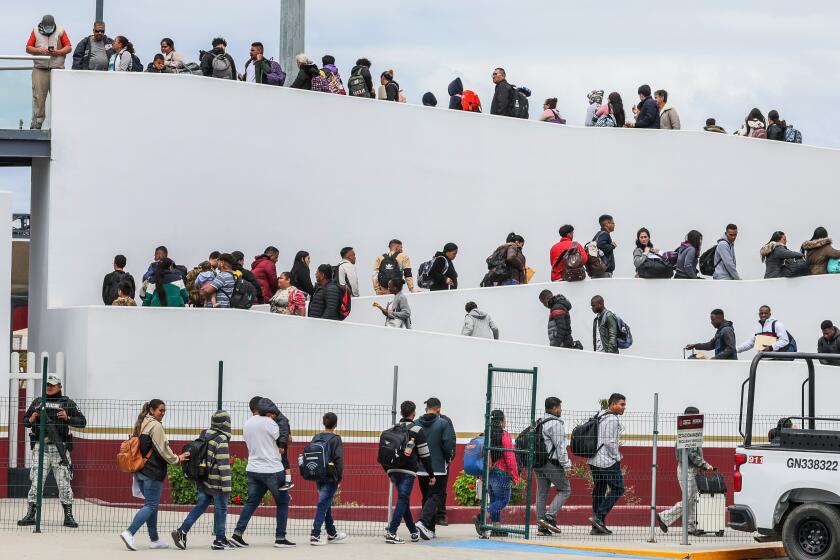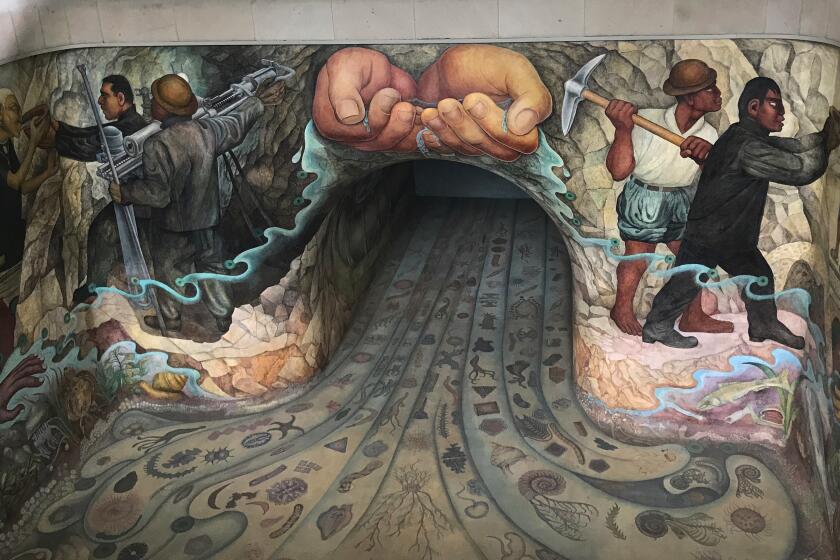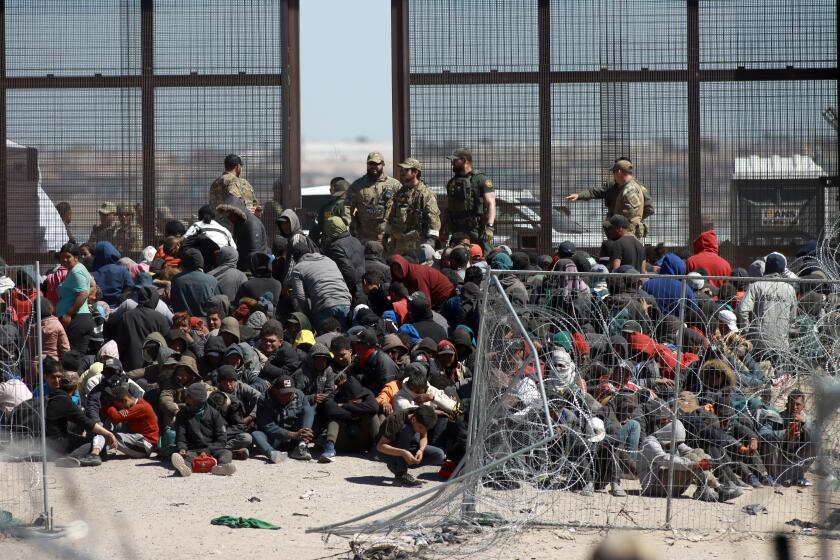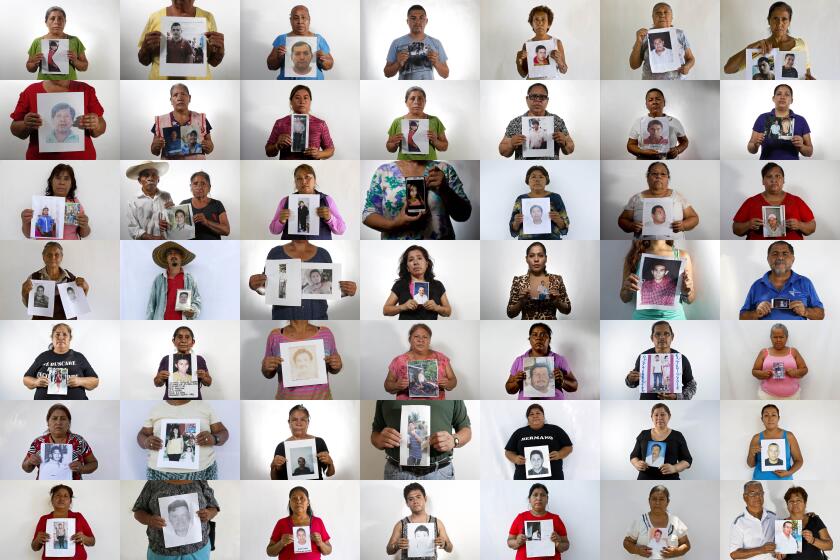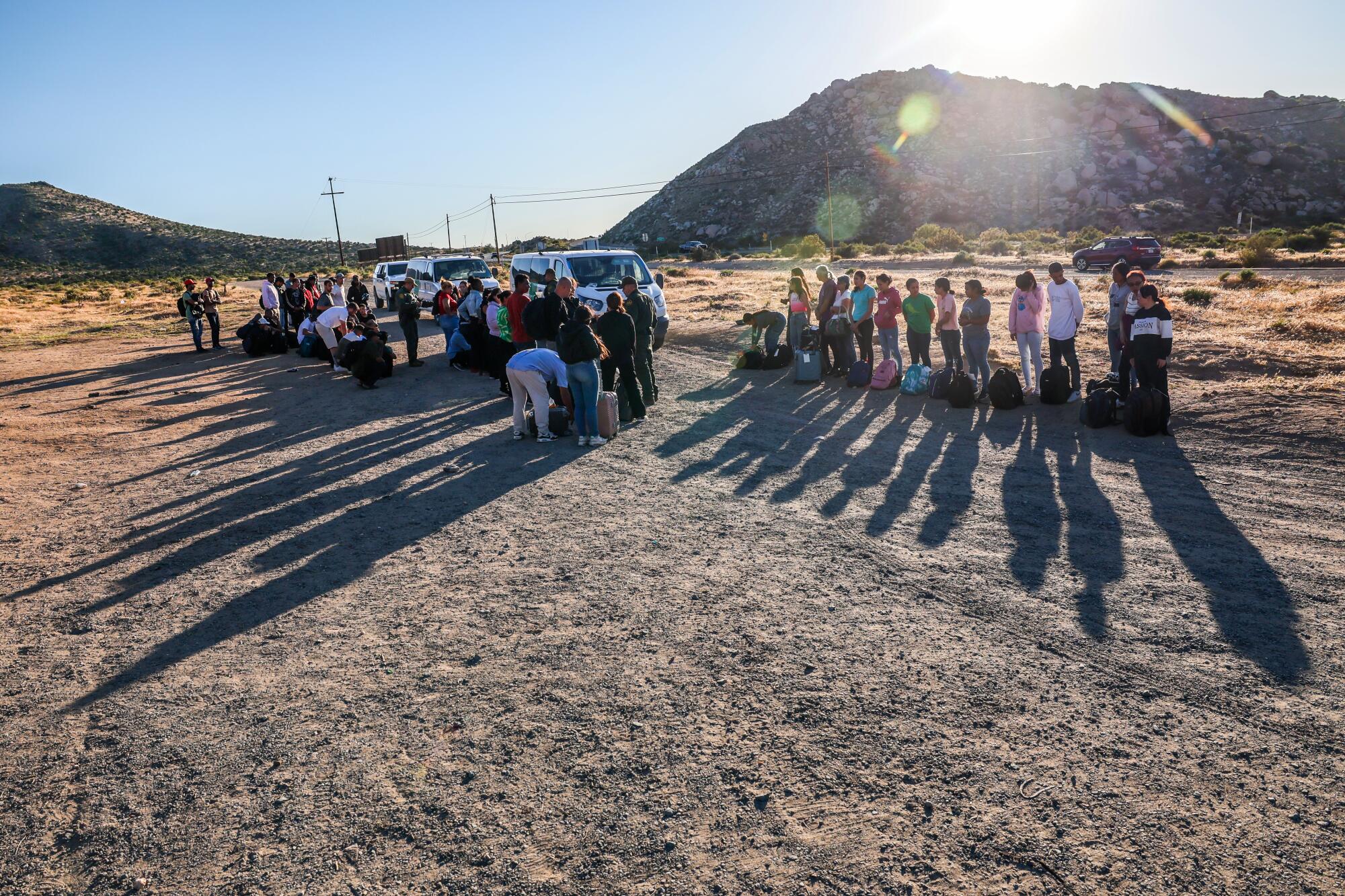
DULZURA, Calif. — At dawn came a dozen men, women and children from Nepal. Following in the twilight was a cluster of families from Peru, Ecuador and Colombia, along with half a dozen Chinese men.
Behind them were men from India and couples from Azerbaijan and Kazakhstan carrying infants.
Scattered migrants kept arriving at the top of a steep dirt road to surrender to U.S. border agents in order to claim asylum.
“I am finally here, in America,” Justin Agbobli, 30, who had traveled from Togo in West Africa, proclaimed in French. “Today is a dream come true!”
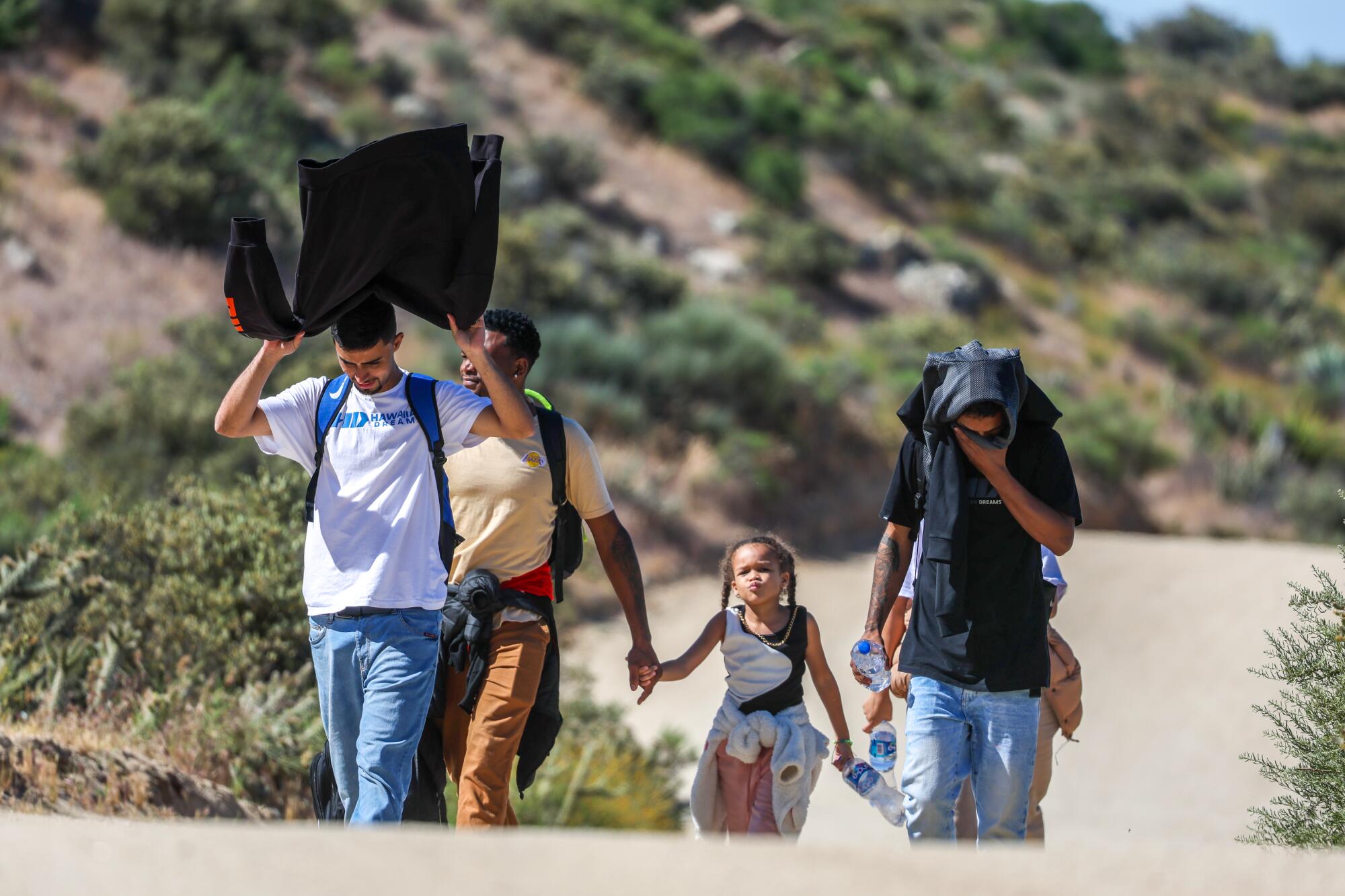
San Diego County has become the most popular spot for migrants illegally entering the United States, according to the latest government figures. With 37,370 arrests last month, it was the busiest of the Border Patrol’s nine sectors along the southern border for the first time since the 1990s.
Depending on whom you ask, the federal immigration app CBP One is a solution to the border crisis, a human rights violation or a ploy to let anyone into the U.S.
Driving the numbers is a massive increase in people from countries that usually don’t account for much illegal immigration.
It has long been the case that the majority of migrants arriving along the 2,000-mile border come from Mexico, Guatemala, Honduras and El Salvador. But a dramatic shift has been underway along the 60-mile stretch that makes up the San Diego sector.
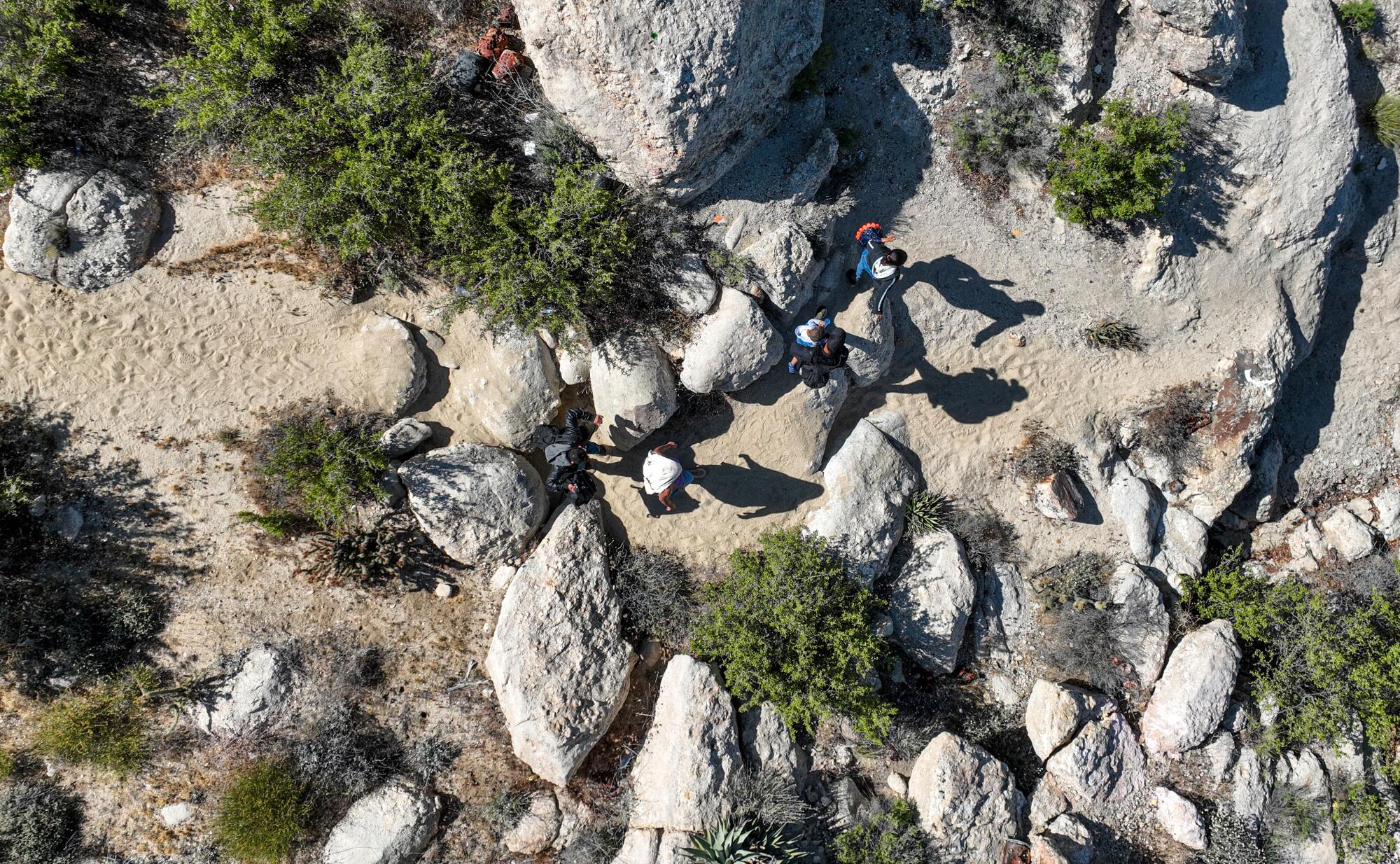
Between Oct. 1 and March 31, those four countries accounted for just 20% of the 185,469 apprehensions in the San Diego sector. The other 80% were arrests of people from China, Colombia, Ecuador, Brazil, Turkey, India and a vast array of other faraway places.
The diversity here reflects a massive worldwide movement of people that has been attributed to a variety of factors, including continued economic fallout from the pandemic, rising political repression and increasing ease of international travel.
The challenge in Mexico City, built amid lakes by the Aztecs, had long been getting rid of water, not storing it. Now its taps are running dry.
As to why San Diego has become the favored crossing spot on the U.S. border, experts point to a crackdown by Mexican authorities that has made it harder to reach Texas.
Migrants and the smugglers they hire have long sought out the path of least resistance.
That now appears to be San Diego.
On a recent morning in the tiny community of Dulzura, a 36-year-old industrial engineer from Turkey who had just crossed the border from Mexico would give only his first name, Melih.
“You might see me as an invader — and yes, you are right, in a sense, I am invading your country,” he said. “But I am coming to your country to commit no crime. This — crossing the border illegally — is the only crime I have ever committed in my entire life.”
He said he wanted to enter the country to work but was told there was a two-year wait at U.S. consulates in Turkey just to apply for a tourist visa. “Who can wait that long?” he asked before stubbing out a cigarette butt and heading uphill to join the line of some 100 migrants turning themselves in.
: :
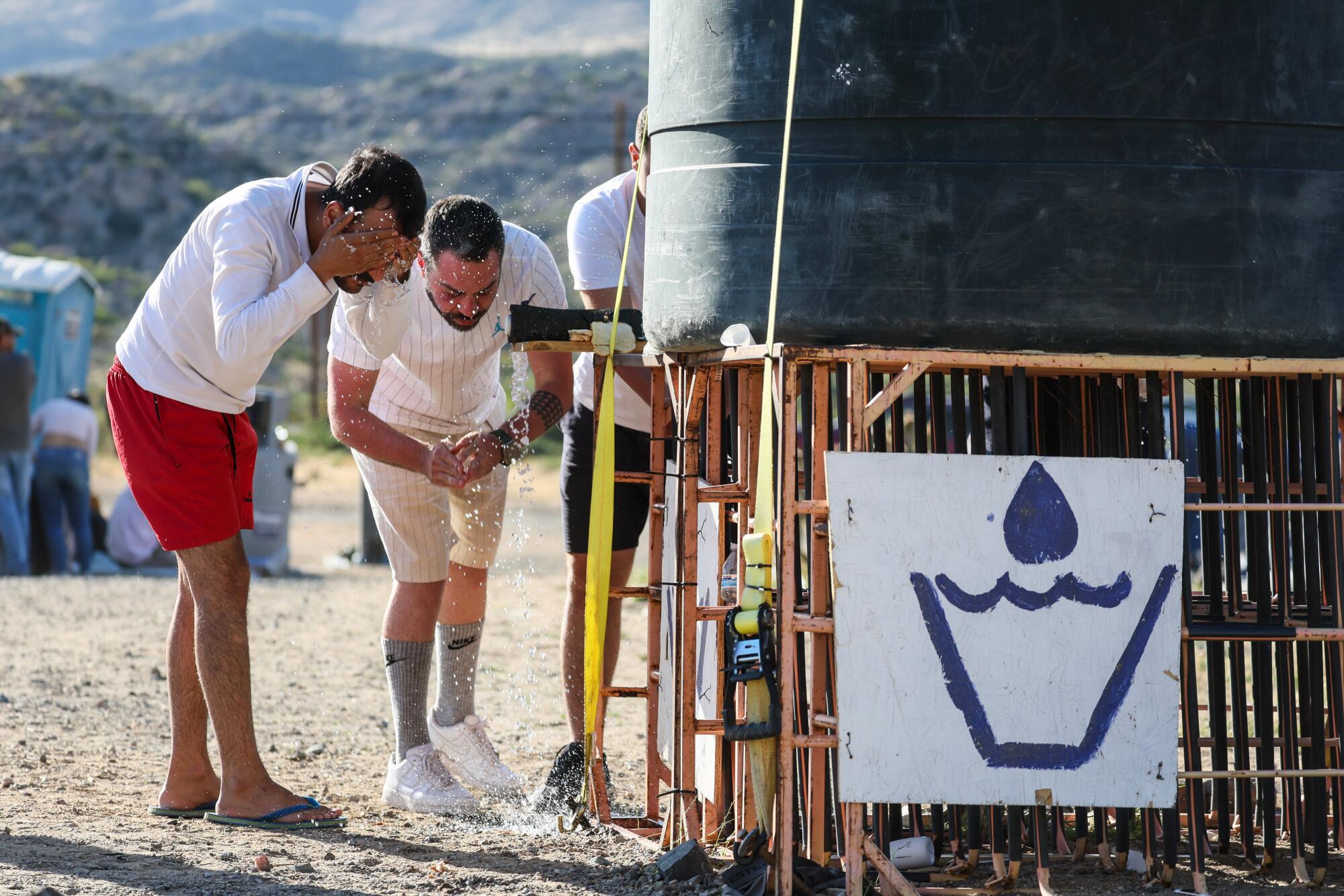
For much of the 1980s and ‘90s, San Diego was ground zero for immigration polemics.
“They keep coming,” intoned an inflammatory 1994 campaign ad for Republican Gov. Pete Wilson that included footage of dozens of migrant families charging up Interstate 5 just north of the border.
“Enough is enough,” Wilson declared at the end of the spot.
The furor about illegal immigration resulted in the Clinton administration’s signature Operation Gatekeeper, which militarized the border with a frenzy of fence-building, agent deployments and installations of sensors, lights and cameras.
Steel walls went up in places where the line once featured stands of repurposed metal sheets designed for makeshift military airstrips in Vietnam.
But more walls didn’t stop people from coming. Instead, the flow shifted east to Arizona and Texas.
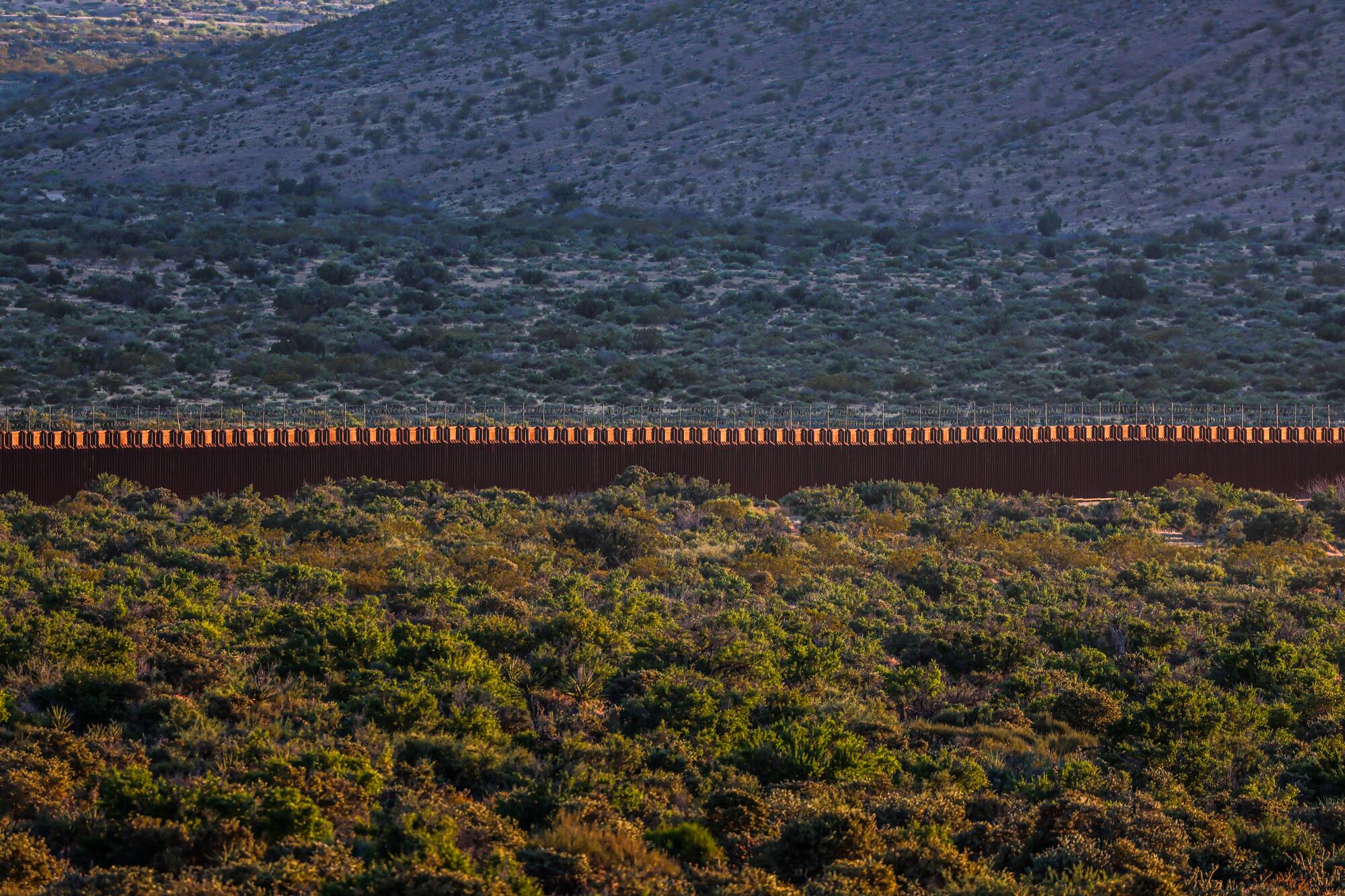
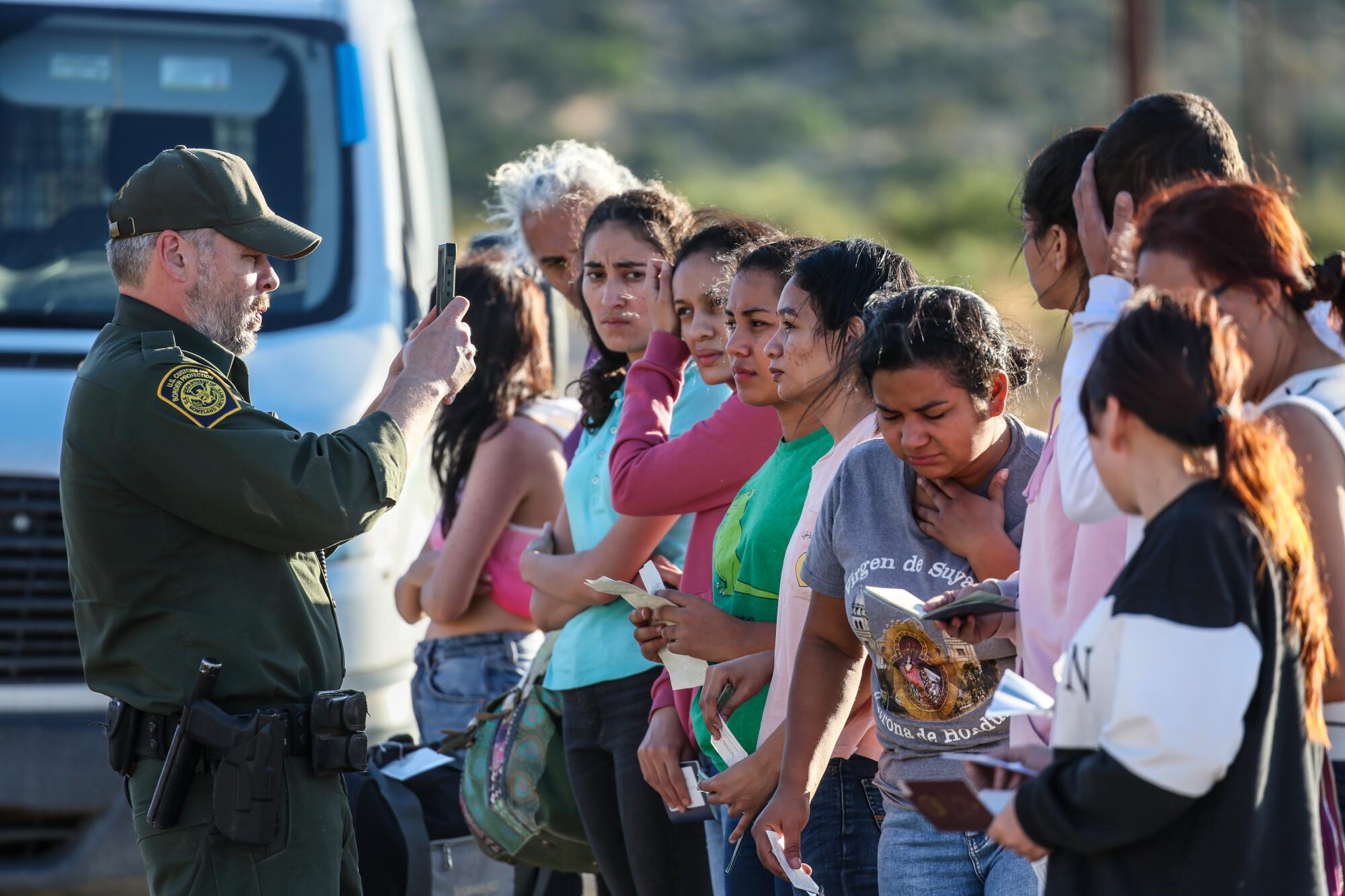
Now, a quarter-century later, human traffic along the border is moving west.
Texas Gov. Greg Abbott asserts that’s because of his actions — posting National Guard forces and state troopers along the Rio Grande and installing barbed wire and other barriers.
“Our stiff resistance is working,” Abbott wrote on X in February.
Immigration enforcement has long been the domain of the federal government. Texas is trying to change that.
Experts said it is possible that talk about the Republican governor’s Operation Lone Star has steered some migrants away from Texas. Word spreads quickly on social media platforms where migrants share travel tips.
But a much bigger factor, experts said, is that Mexico — under pressure from the Biden administration to help curb illegal immigration — has clamped down on migrants hopping on freight trains bound for areas near Texas.
“Mexican authorities have put a lot of pressure on key migration routes to Texas, and that may be forcing people to try other routes further west,” said Cris Ramón, senior advisor on immigration for the Latino civil rights organization UnidosUS. ”Migration is a dynamic phenomenon, and people are going to adjust and find the circumstances where they have the best chance to reach the United States.”
Indeed, the total number of apprehensions along the entire border between Oct. 1 and March 31 — slightly exceeding 1 million — was nearly unchanged from the same period a year earlier. That’s because a 29% drop in the Texas sectors was counterbalanced by a 134% increase in the Tucson sector and a 69% rise in the San Diego sector.
Critics say the government of Mexican President Andrés Manuel López Obrador is trying to downplay how people have disappeared in recent years.
Multibillion-dollar networks of smugglers quickly assess where enforcement pressure is most stringent and adapt. In Tijuana, so-called coyotes guide migrants to remote areas of eastern San Diego County, where border fencing is scant, or to gaps gouged in the metal wall near the giant port of entry in the U.S. border community of San Ysidro.
Migrants interviewed said smugglers had directed them to the Tijuana-San Diego corridor without explaining why — even though the trip here involves more than 1,000 miles additional travel compared with some points along the Rio Grande.
“The smugglers charged us $3,500 each from Ecuador — for me and my girlfriend — and I thought that was a pretty fair price,” said one 30-year-old who would give only his first name, Exar. “I know a lot of people paid a lot more.”
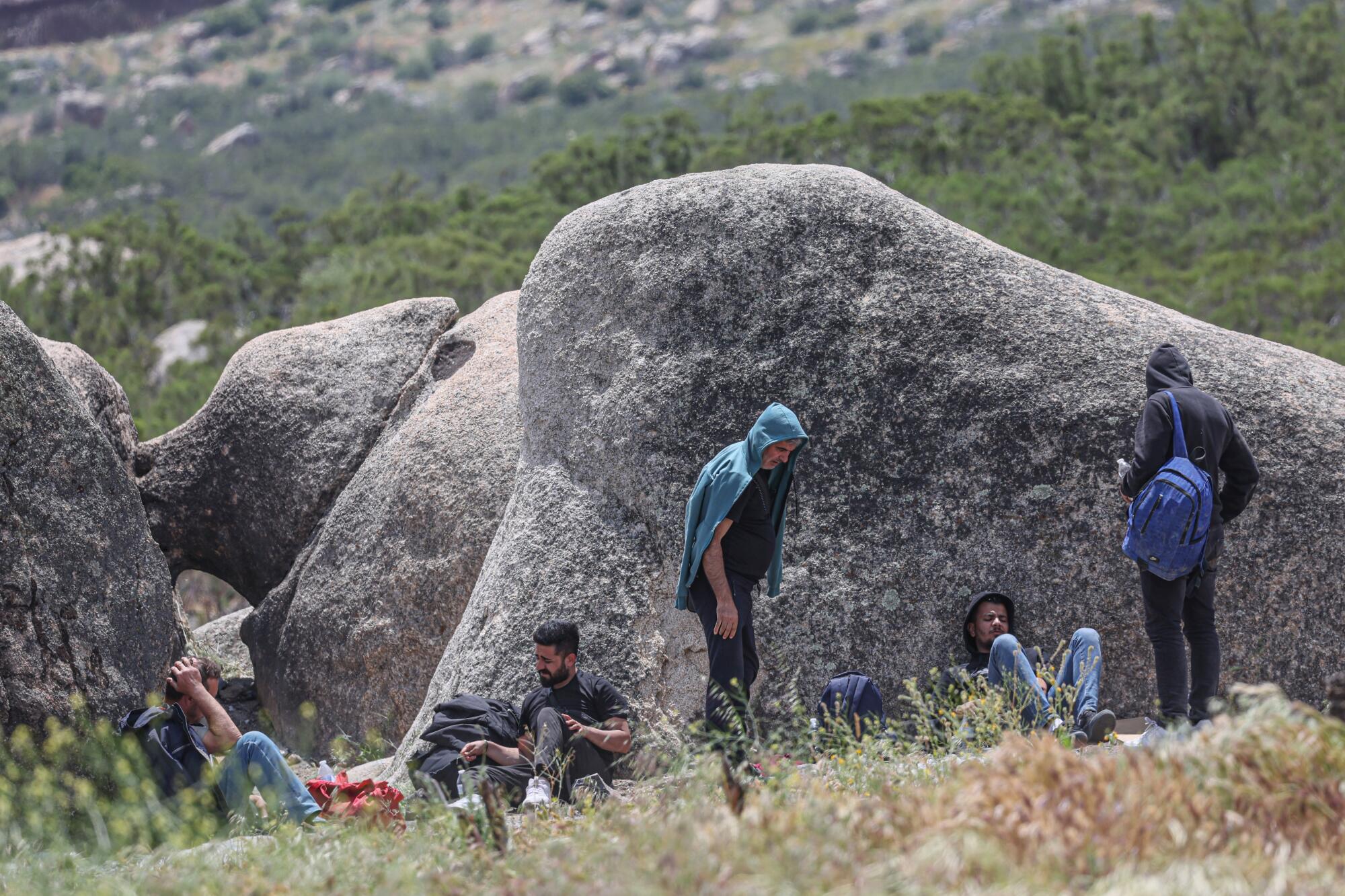
Like many migrants, he said he put his faith in the professionals, choosing smugglers who were highly recommended by compatriots.
He and his girlfriend flew from Ecuador to El Salvador, and from there traveled in various cars through Central America to Mexico, he said. Once in Tijuana, the smugglers led him and his group to a hole in the border fence.
A mechanical engineering student from a middle-class family, he said he left Ecuador after gangs made extortion demands on his father, who runs a soldering shop. Now he was hoping to reach the home of a brother in New Jersey.
“I understand why Biden and Trump want to stop immigration,” he said. “But it’s a little late for that, no?”
: :
The most dramatic increases in migrant apprehensions in the San Diego sector involve people from China. Between Oct. 1 and March 31, there were 23,890 arrests of Chinese.
That was 18 times the total during the same period a year earlier and accounted for nearly all Chinese migrants detained border-wide.
Increases in arrests were also substantial for other countries whose citizens previously accounted for relatively few illegal border crossings.
Ecuador: up 499% to 13,654.
Colombia: up 114% to 35,819.
Brazil: up 622% to 12,698.
Turkey: up 88% to 6,786.
India: up 331% to 6,560.
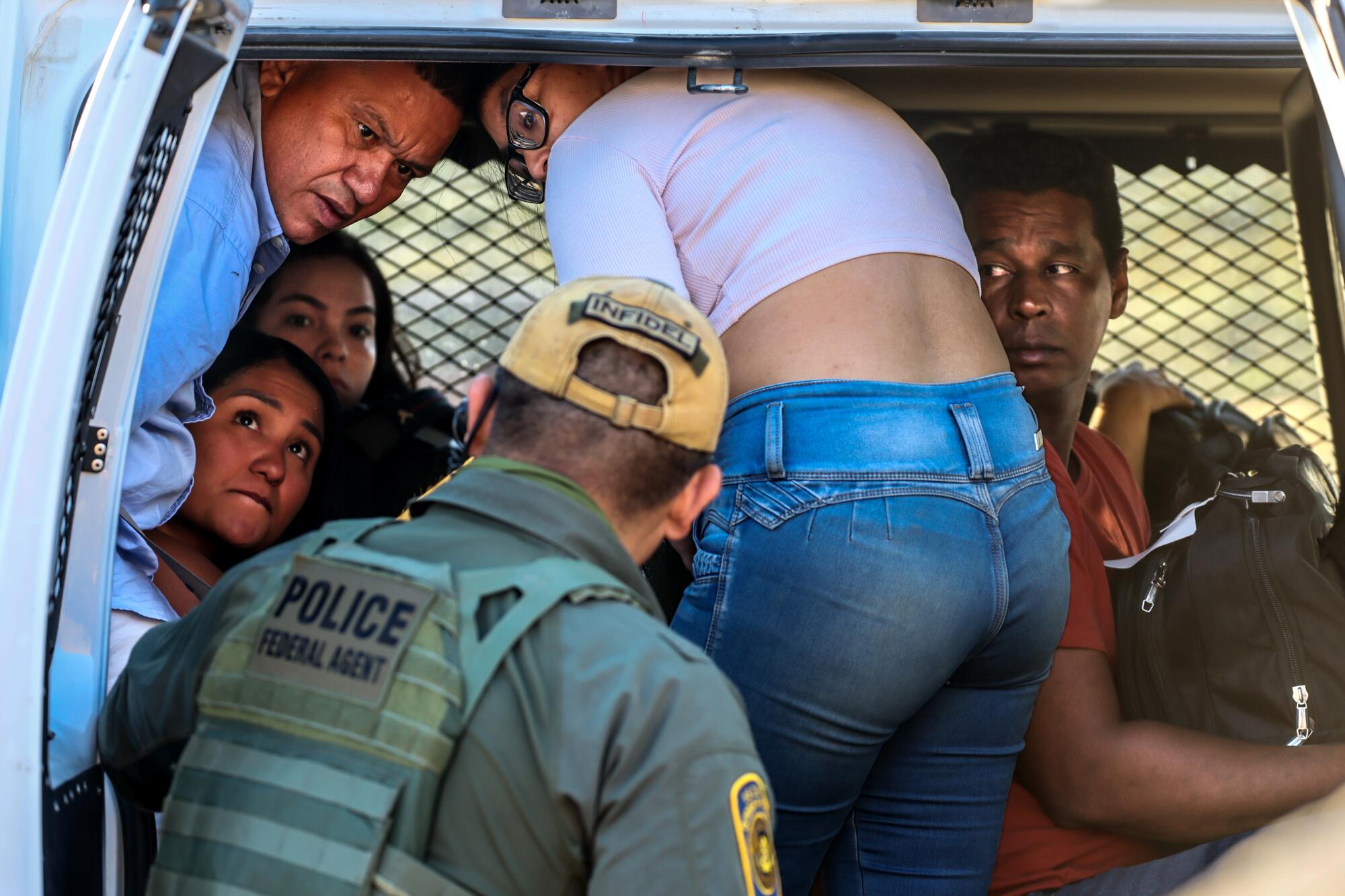
Many migrants interviewed had flown from Africa, Asia or Europe to South America and trekked north through the Darién Gap, a 60-mile stretch of dense rainforest between Colombia and Panama. Getting people across the gap has become big business in recent years, boosting its allure as a conduit to United States. Last year it drew more than 500,000 migrants.
Others avoided the Darién, flying from Colombia to Central America or directly to Mexico, then made their way to Tijuana, which has an extensive infrastructure that caters to migrants.
“Why do people come to Tijuana and San Diego? It’s very simple,” said Rafael Fernández de Castro, who heads the Center for U.S.-Mexican Studies at UC San Diego. “Because Tijuana is the border city best equipped to receive migrants, where there are more shelters, more hotels, a major airport, more coyotes, more business — all the good and the bad we have in Tijuana.”
Once they cross the border, most migrants these days don’t run from the Border Patrol. They seek out agents to give themselves up to claim asylum — and eventually have a chance at legal residency in the United States. Many are unaware that a Biden administration policy change last year means that people who cross illegally are presumed ineligible for asylum.
On a recent morning, more than 100 men from Africa, Asia, the Middle East and South America huddled near a campfire at a rough camp within view of passing traffic on Interstate 8 outside the California high-desert community of Jacumba Hot Springs, an hour’s drive east of San Diego. Border Patrol agents had swung by the camp at dawn and picked up parents with children, but not single men, the stranded migrants said.
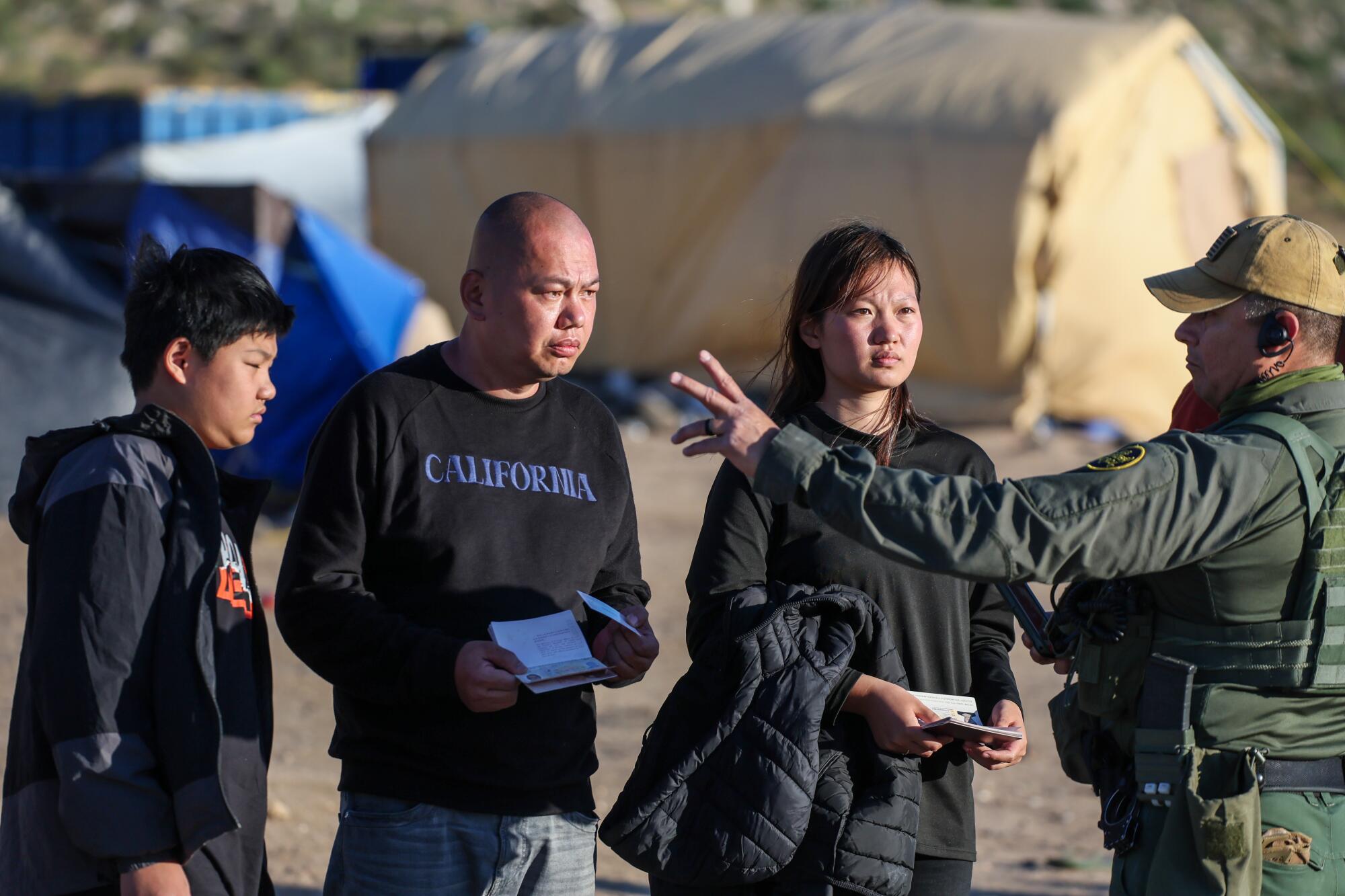
Several Chinese men were irate about having to wait for hours in the blustery weather.
“Why don’t American police like Chinese?” asked one man, who gave his name as Long, 35, and said that he was an engineer back home in Guangdong province and that he sought freedom and economic betterment in the United States.
Finally, agents showed up and led the Chinese men, along with others, to a Border Patrol bus waiting to take them off to detention.
Many detainees are soon freed with court dates a year or more away to appear for immigration hearings.
Almost daily, white buses contracted by the Border Patrol drop off scores of migrants at a trolley station parking lot in San Ysidro. Many express surprise at having been released from custody so quickly after having crossed illegally into the United States.
The muxe — Indigenous Zapotec people in Mexico — view themselves as neither man nor woman. They embrace a distinct ‘third gender,’ part of a burgeoning LGBTQ+ movement worldwide.
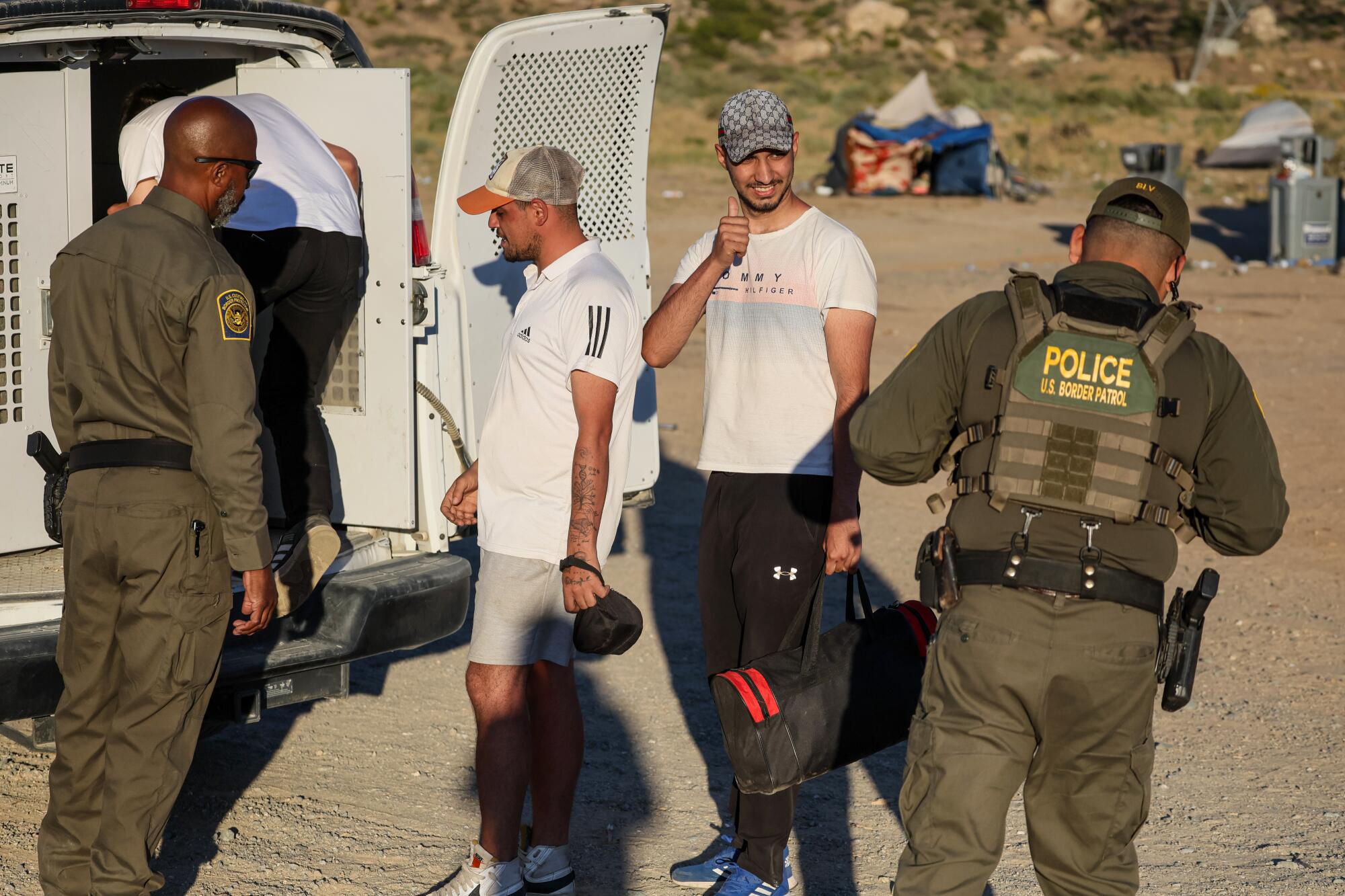
“So this is California?” asked Hernán Torres, a 49-year-old former security guard from Colombia who was held for two days and planning to go to Denver to find work.
He surveyed the parking lot, where entrepreneurs speaking fast-paced Spanish, Mandarin, Arabic and other tongues were sizing up new arrivals, offering rides and other services. Money-changers bared wads of hundred-dollar bills.
The U.S. government was dispatching additional agents to the San Diego area in response to the recent increases in migrants arriving there, according to a senior Customs and Border Protection official who spoke on condition of anonymity. Mexican authorities were doing the same on their side of the border.
“Just like we’ve done in the past, when the cartels shift, we adjust our operations,” the official said.

Those efforts, he said, might eventually reduce migration in the San Diego sector. But he suggested that it was only a matter of time before new routes would emerge somewhere else.
“The cartels,” the official said, “are constantly trying to find ways to exploit and circumvent enforcement.”
Times staff writer Andrea Castillo contributed to this report.
